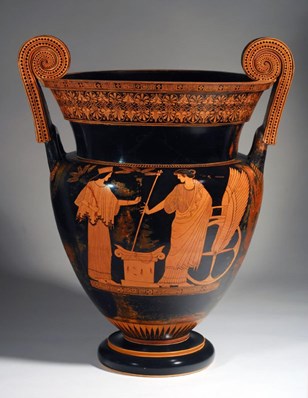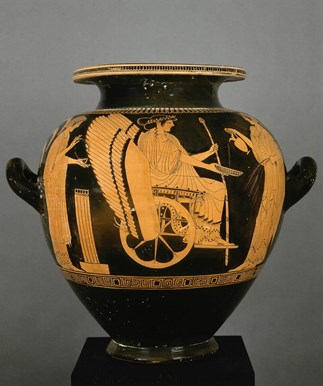Triptolemus
According to the Orphics, Triptolemus was the son of Dysaules and Baubo and brother of Eubouleus. He was a cowherd and, along with his brother, provided Demeter with information about the rape of her daughter by Hades since they saw their swine being swallowed by the earth. In return for this information, they received the secrets of agriculture from Demeter. Triptolemus’ name is as mysterious as his descent, but it means either “thrice-ploughed” or “thrice sowed" according to the most common interpretation”. The confusion about Triptolemus arises because no major poem or work of literature existed to ascribe to him a fixed genealogy. Therefore, every poet and tradition were free to argue that they had brought Triptolemus to the world. The most outstanding contribution of the Orphics to the story of Triptolemus and his connection to the Eleusinian Mysteries might be the creation of his mission to teach the Greeks and the world the art of growing grain. The Homeric Hymn to Demeter does not refer to any such assignment. Onomacritus, an Orphic poet in the circle of the Athenian tyrant Peisistratos (c. 600-527 BCE), composed poems and oracles about Triptolemus with references to the many people who received the corn [from him]. Therefore, it seems possible that in the sixth century BCE, the Orphics contributed to a significant reinterpretation of the Eleusinian cult. It was a time of increasing Athenian interest in the Mysteries and Triptolemus’ first appearance in art.

Demeter and Triptolemos (1/3), Berlin painter, ca. 490 BCE, vessel, Badisches Landesmuseum, Karlsruhe © Badisches Landesmuseum

Stamnos [A]. The departure of Triptolemus, The Triptolemos Painter, ca. 480 BCE, vessel, Musée du Louvre © 1993 RMN-Grand Palais (musée du Louvre) / Hervé Lewandowski






